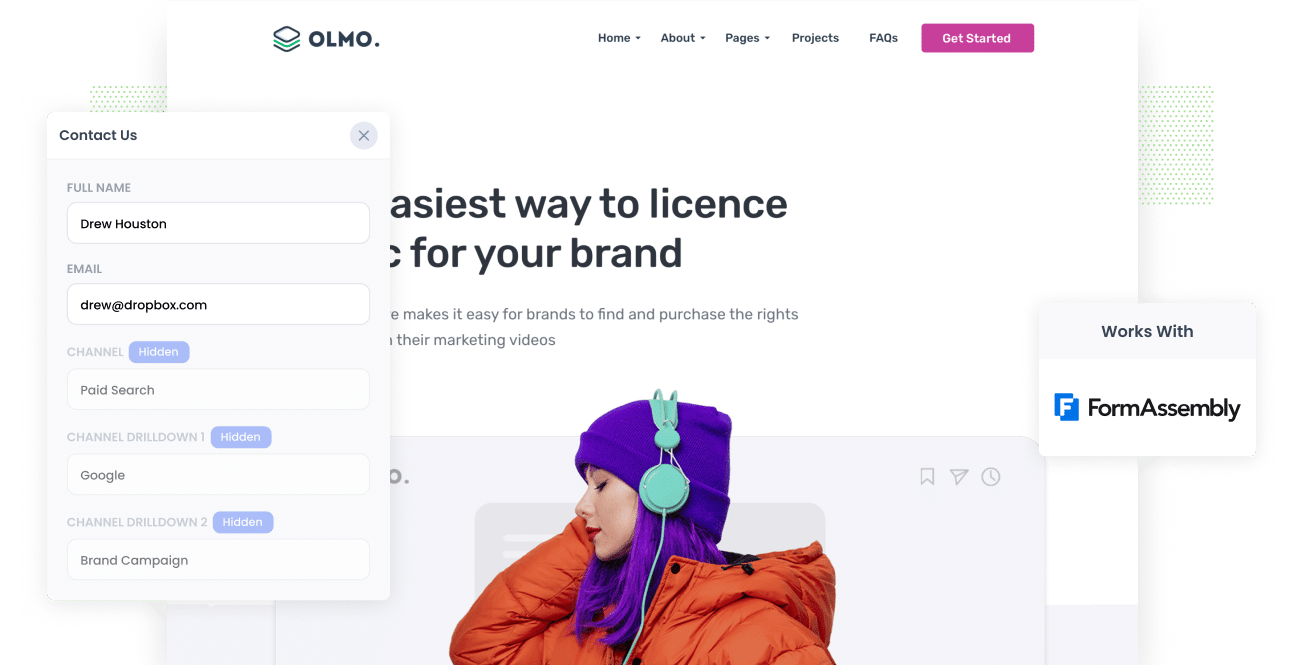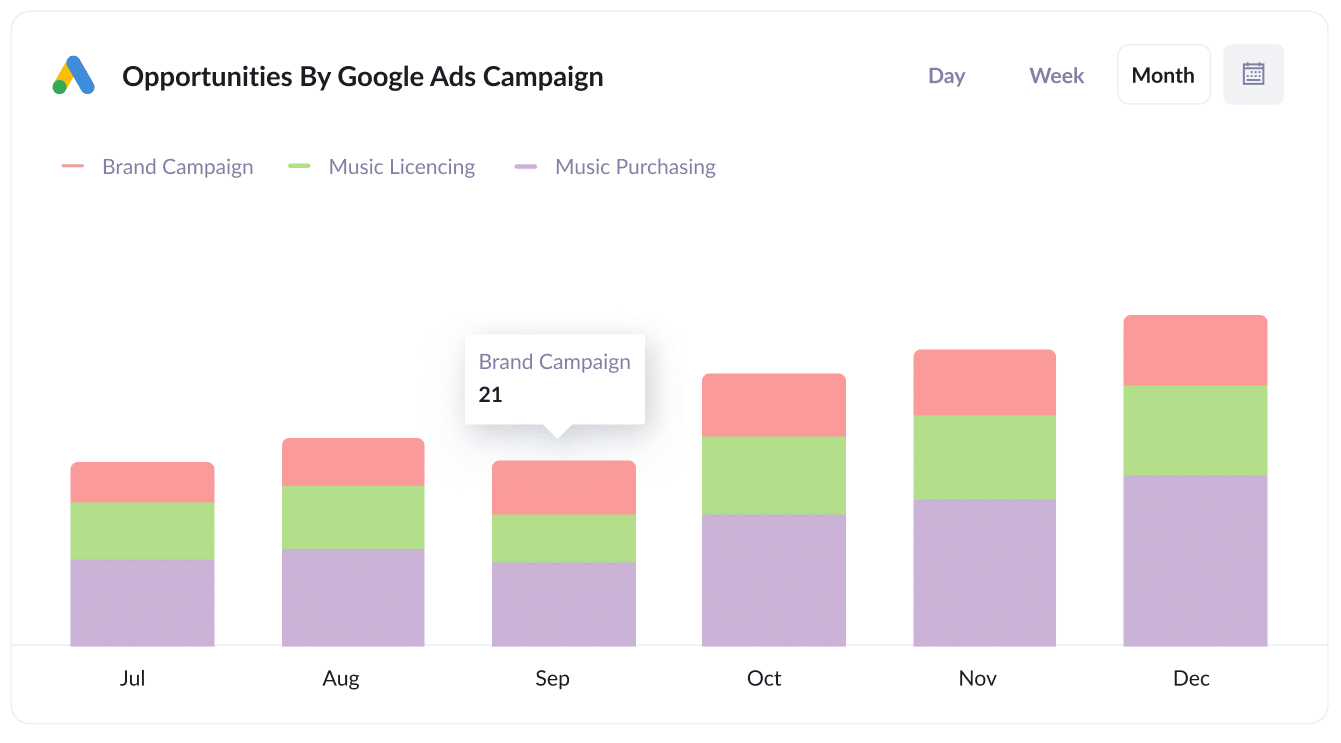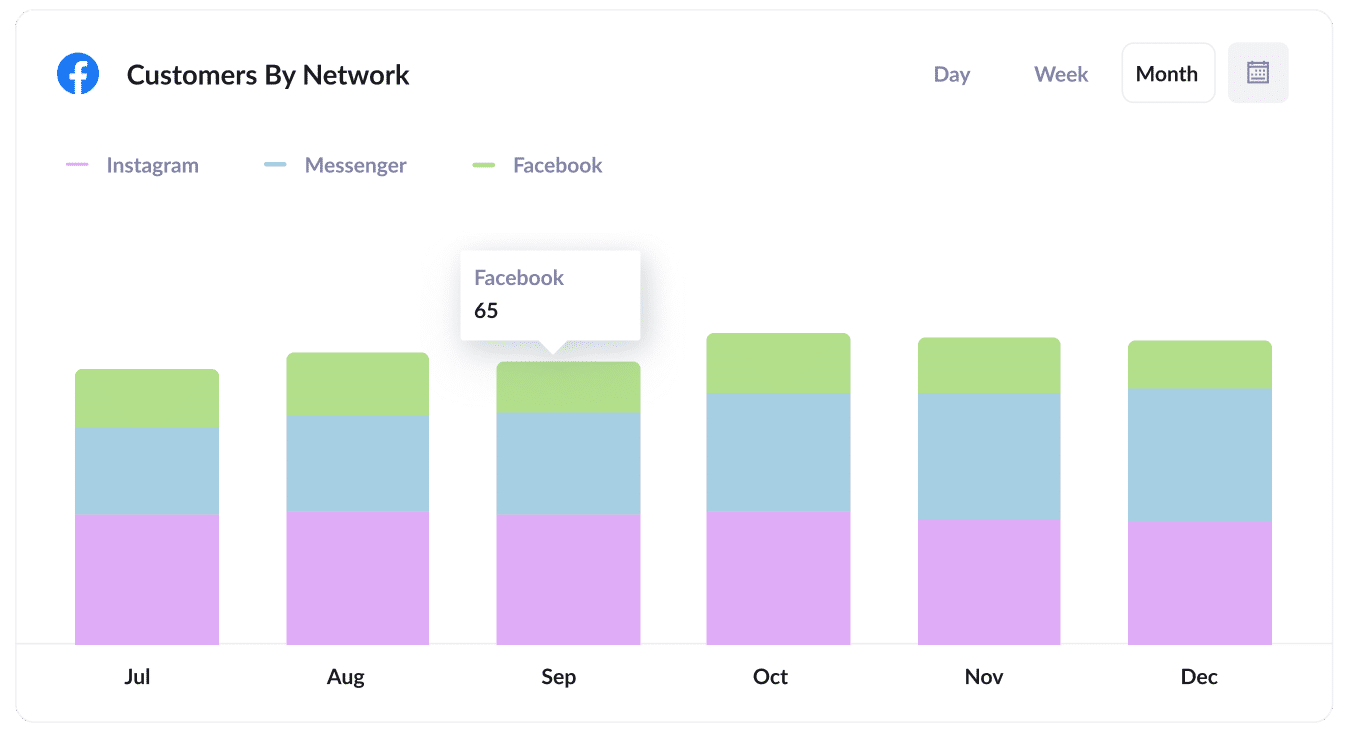How to capture Google Analytics data in FormAssembly
Learn how to capture Google Analytics data with each submission of your FormAssembly forms, so you can see where all your leads are coming from.

If you use FormAssembly to capture leads on your website and are reading this article, there's a good chance you're wanting to know where those leads are coming from.
Tools like Google Analytics make it easy to see what channels your website visitors are coming from (I.e. Paid Search, Paid Social, Organic Search, etc), but to actually understand what's driving your leads & customers you need to be able to capture what channel each lead has come from and send it through to your CRM and other sales & marketing tools.
In this article, we'll show you how to use a tool called Attributer to capture Google Analytics data with each submission of your FormAssembly forms.
What is Attributer?
Attributer is a small snippet of code you place on your website.
When a visitor lands on your site, Attributer figures out where they came from and categorizes them into a series of channels (the same ones you see in Google Analytics, like Paid Search, Paid Social, Organic Search, etc.)
Then when that person completes one of your FormAssembly forms, Attributer writes information on where they came from into hidden fields on the form and it is captured by FormAssembly alongside the lead's name, email, etc.
You can then see that information in the responses section of FormAssembly, send it to your CRM, send it to a spreadsheet or data warehouse, etc.
Finally, you can then use this data to run reports that show you how many leads & customers you are getting from your various marketing initiatives.
4 steps to capture Google Analytics data in FormAssembly forms
Using Attributer to capture Google Analytics data in FormAssembly is easy. Here's how to do it in 4 steps:
1. Add hidden fields to your forms

Step #1 is to add a series of hidden fields to your website forms.
As the name suggests, hidden fields are form fields that are actually on your form but are not visible to visitors (meaning adding them won't change the look and feel of your forms).
The hidden fields you need to add are:
- Channel
- Channel Drilldown 1
- Channel Drilldown 2
- Channel Drilldown 3
- Landing Page
- Landing Page Group
Adding hidden fields to FormAssembly is easy and step-by-step instructions can be seen here.
2. Attributer automatically completes the hidden fields with Google Analytics data

Now that you've added the hidden fields, Attributer will start to track where your website visitors are coming from and will write the information into those hidden fields when someone completes the form.
To illustrate how this works, let's imagine you're a marketer at FormAssembly and you're using Google Ads to promote FormAssembly's form building software.
If someone clicked one of these ads and completed a form on your site, Attributer would populate the hidden fields as follows (depending on what UTM parameters you placed behind your ads):
- Channel = Paid Search
- Channel Drilldown 1 = Google
- Channel Drilldown 2 = Brand Campaign
- Channel Drilldown 3 = FormAssembly
On top of that, Attributer would also capture their initial landing page (e.g., www.formassembly.com/blog/best-form-builder) and the associated landing page group (e.g. /blog).
3. Google Analytics data is captured in FormAssembly

When the visitor submits your form, the Google Analytics data that Attributer wrote into the hidden fields is captured in FormAseembly along with the lead's name, email, phone, etc.
You can then use FormAssembly's integrations or 3rd party tools like Zapier to send the data to Salesforce, Pipedrive, Zoho CRM, Microsoft Dynamics & more.
4. Run reports to see what's working

Now that you have data on where each lead came from, you can use it to understand what's working and what isn't.
Not only can you see this data in the Responses table in FormAssembly, but if you use a CRM like Salesforce you can send the information there and use it to create reports that show the amount of leads, opportunities, customers & revenue you are getting from each channel or campaign.
What data gets captured in FormAssembly
If you're using Attributer to capture Google Analytics data with each submission of your FormAssembly forms, you get two main pieces of information:
1. Channel
Attributer passes through information on what channel each lead came from.
So if I was a marketer at FormAssembly and was running Facebook Ads, Attributer would pass through information like:
- Channel: Paid Social
- Channel Drilldown 1: Facebook
- Channel Drilldown 2: Brand Campaign
- Channel Drilldown 3: Free Trial ad
Similarly, if the lead arrives organically through a Google search, Attributer would capture:
- Channel: Organic Search
- Channel Drilldown 1: Google
- Channel Drilldown 2: www.google.com (or the specific Google domain they came from)
- Channel Drilldown 3: FormAssembly (or the keyword they used to find the site, if available)
1. Landing page
In addition to the Channel information which outlines how people arrived at your site, Attributer also captures information on what content attracted them there.
This includes the initial landing page (I.e. formassembly.com/blog/best-form-tools) and the landing page group (I.e. /blog)
3 example reports you can run when you use Attributer to capture Google Analytics data in FormAssembly
Prior to starting Attributer, I ran marketing & analytics team for several billion-dollar tech companies.
In that time, I ran hundreds of reports to understand where my leads & customers are coming from.
To help you make the most of your new data, here are 3 reports I've found most insightful over the years:
1. Leads by Channel

The above report shows how many leads you get each month, grouped by channel (I.e. Paid Search, Paid Social, Organic Search, etc.)
This report is a great way to get a high-level overview of what's working and what you can do to grow.
For instance, if the majority of your leads are coming from Organic Search but most of your budget is going to Paid Search, it might be time to rethink that approach.
2. Opportunities by Google Ads campaign

Ever wondered which of your Google Ads campaigns was actually generating sales opportunities (versus just generating leads that don't go anywhere)?
This report can help. It shows the number of sales opportunities generated by Google Ads campaign is a great way to see which campaigns are actually generating opportunities and pipeline for your business.
3. Customers by Facebook Ads Network

This report shows how many new customers you've gotten each month from your Facebook Ads, and breaks it down by the specific network they came from (it's likely your ads are appearing across the various social media networks Facebook owns, including Facebook, Instagram, Messenger & Whatsapp).
This report can help you understand which network your ads are performing best in and where you should be focusing your budget.
Wrap up
Attributer is a great way to capture Google Analytics data on where a lead has come from.
You can then send that data to your CRM or a spreadsheet and run reports that show you which of your marketing initiatives are actually helping your business grow.
Best of all, it's free to get started and it only takes 10-15 minutes to setup, so get started with a 14-day free trial now!
Get Started For Free
Start your 14-day free trial of Attributer today!

About the Author
Aaron Beashel is the founder of Attributer and has over 15 years of experience in marketing & analytics. He is a recognized expert in the subject and has written articles for leading websites such as Hubspot, Zapier, Search Engine Journal, Buffer, Unbounce & more. Learn more about Aaron here.
